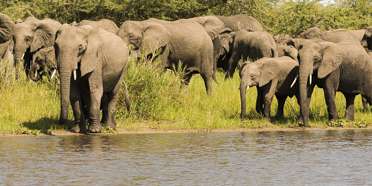
Safari Tours to Liwonde NP
-
![12-Day Ultimate Malawi Safari & Beach Escape]()
12-Day Ultimate Malawi Safari & Beach Escape
$6,205 to $8,202 pp (USD)
Malawi: Private tourLuxuryLodge & Tented Camp
You Visit: Blantyre (Start), Majete WR, Liwonde NP, Lake Malawi, Cape Maclear (Lake Malawi), Lilongwe (End)

Wayfairer Travel
4.8/5 – 172 Reviews
-
![5-Day From Wilderness to Waterfront Malawi Adventure]()
5-Day From Wilderness to Waterfront Malawi Adventure
$2,805 pp (USD)
Malawi: Private tourLuxuryLodge & Resort
You Visit: Lilongwe (Start), Liwonde NP, Lake Malawi, Blantyre (City), Chileka Airport (End)

Baseline Travel
5.0/5 – 1 Reviews
-
![11-Day Best of Malawi Birding]()
11-Day Best of Malawi Birding
$5,061 to $5,542 pp (USD)
Malawi: Private tour
Mid-range Lodge & Guest HouseYou Visit: Blantyre (Start), Thyolo District, Zomba Plateau, Liwonde NP, Cape Maclear (Lake Malawi), Dzalanyama FR, Lilongwe (End)

Land & Lake Safaris
4.8/5 – 30 Reviews

 Malawi Parks
Malawi Parks











